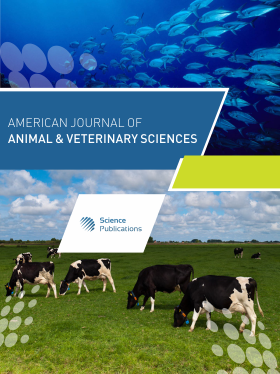Prevalence and Risk Factors of Bovine Fascioliasis in Northeastern Peru
- 1 Graduate School, Toribio Rodríguez of Mendoza from Amazonas National University, Chachapoyas, Peru
- 2 San Ramón Agrarian Experimental Station, National Institute of Agrarian Innovation, Yurimaguas, Peru
- 3 Institute for Research in Livestock and Biotechnology, Toribio Rodríguez of Mendoza from Amazonas National University, Chachapoyas, Peru
- 4 Institute for Research in Livestock and Biotechnology, Toribio Rodríguez of Mendoza from Amazonas National University, Chachapoyas, Peru
- 5 National Agrarian Health Service from Peru, San Martín, Peru
- 6 El Porvenir Agrarian Experimental Station, National Institute of Agrarian Innovation, Juan Guerra, Peru
Abstract
Bovine fascioliasis in Peru is highly prevalent in almost all regions; however, there are few studies about its prevalence in the region of Amazonas. This research aimed to determine the prevalence and risk factors associated with fascioliasis from four livestock basins in the Amazonas region. A total of 941 bovine feces samples were analyzed and a prevalence of 52% was found. The highest prevalence was registered in females (53.9%), crossbred (58.6%), and producers with less than 50 animals (54.40%). The highest risk factor was for Brown Swiss (2.1), crossbreeds (2.4), heifer (4.1), females (1.4), and bovine that drinks water from streams (2.5) and waterhole (2.4). With the principal component analysis, 5 groups were identified, where the first explains that the area of the farm and the number of animals are related to the prevalence of fascioliasis. Group five indicated a relationship between the drinking water source and the breeds with the highest prevalence of fascioliasis. The results show that there are high prevalence and risk factors that affect livestock productivity and welfare. For this reason, there is a need to improve veterinary and animal health support, as well as training in livestock management, providing adequate sources of nutrition, and improving drug administration.
DOI: https://doi.org/10.3844/ajavsp.2023.173.183

- 3,854 Views
- 2,495 Downloads
- 0 Citations
Download
Keywords
- Amazonas Region
- Extensive Livestock
- Fasciola Eggs
- Fascioliasis
- Odds Ratio
